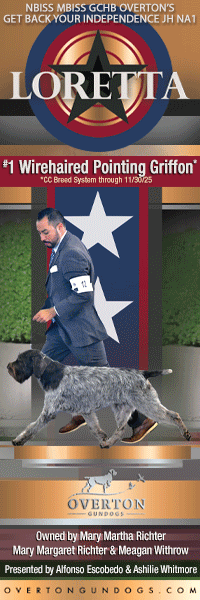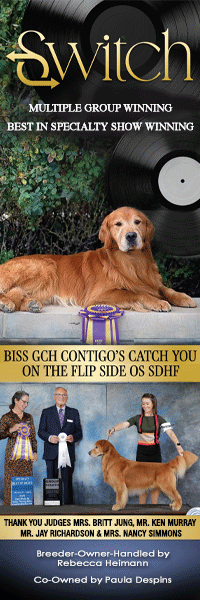Ch. Snow Boy of Fircot and The Miniature Poodle Revolution
Poodle breeders love to debate the inherent shortcomings of various sizes and colors, and critical evaluation is essential. However, to maintain perspective on the breed’s progress it’s equally important to step back occasionally and review the big picture.
Only 34 Poodles were registered in 1930 when Alice Lang Rodgers and Helene Whitehouse Walker began importing stock to respectively found the Misty Isles and Carillon bloodlines. Walker’s import, Ch. Whippendell Poli of Carillon, also became the first Poodle to win a Westminster group that year, and the Poodle scene kicked into overdrive. Many top American kennels emerged, but nothing eclipsed the fame of Blakeen.
In the summer of 1932, Hayes Blake Hoyt began assembling her kennel in Katonah, New York. She imported her first Poodles in 1933. Later that year, a surprise gift from her mother became the final word in birthday presents and instantly raised the Poodle benchmark. The magnificent white Standard, International and English Champion Nunsoe Duc de la Terrace, was already a top winner and celebrated stud before he made history in America. Shown 18 times, he won 16 groups and nine BIS. Owner/handled by Hayes Blake Hoyt, he became the first Poodle to win Westminster in 1935 and she became the woman to break that glass ceiling.
By 1936 she had almost 50 Poodles and Blakeen dominated the ring for decades. Her outstanding accomplishments in Standards have overshadowed her equally important contributions to Miniature Poodles.
Standards were far ahead of the game in terms of quality and numbers, but all sizes benefited from revitalized interest in the breed. From the outset, breeders tried to develop each size and color independently. This was considered the quickest route to consistency, but it also invited the problem of attempting to cultivate traits that were not strongly imbedded in these emerging strains.
When it came to developing Poodle colors, English breeders had already grappled with this conundrum for nearly a century. By the time Blakeen began developing a line of Miniatures, British kennels like Mannerhead and Harpendale were successfully breeding them in rare colors like silver, blue, and apricot. By 1940, Blackeen was making inroads with Miniatures like Ch. Vendas The Black Imp of Catawba. But she had built her reputation on whites, and that color represented one of the biggest challenges.
Fircot was England’s preeminent source of cream and apricot Miniatures. It was also making notable progress with an ice white strain based on the young stud Snow Boy of Fircot. Whelped April 28, 1945, the sound, sturdy, compact 13-inch Snow Boy was a one-off. He was sired by a black dog, Harwee of Mannerhead, known for producing good heads. His dam, Solitaire of Piperscroft, was gray, with a pedigree tracing back to silver and brown. This significant family originated with a white German dog Bodo Von Kurpark, but that color was scarce in Snow Boy’s pedigree. Consequently, he did not possess or transmit the faults that plagued white Miniatures of his day.
The challenge of reproducing his outstanding ice white color was offset by his prepotent ability to produce soundness, style, coat, and breathtaking head type that was previously unknown in white Miniatures. He had great potential, but this was obviously not the dog for a Poodle novice. In England, he quickly demonstrated his ability to transmit this unique package of traits. By 1948, when Blakeen imported “Boysie” he had sired the best white Miniatures in England, including Fircot Garcon de Neige, the sire of five champions.

Judge Henry Stoecker awards Ch. Boondox Sting v Kanawha L Group Two at Westminster Kennel Club handled by the legendary Bobby Fowler
The success of owner/handled Blakeen dogs was inarguable, but she entrusted this project to Henry Stoecker. He grew up showing his family’s Boxers and Terriers in Germany before relocating to America in the 1920s. In 1936, he began managing the famed Pillicoc Poodles and handled them to numerous conformation and obedience wins until WWII when he became a civilian trainer and consultant for the Army’s dog training program.
Stoecker quickly finished Snow Boy, and within months he was racking up wins as a special. He started 1949 by going Best in four of the five Florida circuit shows. The following month he was BOV and Group Third at Westminster. His daughter, Snow Flurry, was BOW and BOS. Later that year, he picked up his first specialty BOV and defeated record entries going BIS in Philadelphia and Detroit.
His ultimate record of 17 all breed BIS doesn’t adequately portray his multidimensional impact on the breed. His success challenged longstanding prejudices about white Miniatures and gave them credibility in the fiercely competitive Poodle world. It also attracted new fans and inspired serious breeders to take up this challenging variety. It’s not coincidental that several important Miniature kennels appeared during these years.
A few years later, Mr. and Mrs. Saunders Meade imported Ch. Fircot L’Ballerine of Maryland for their Seafren Kennel. Handled by Ruth Sayers, his impressive record included winning the last Morris and Essex show in 1957. That was his 17th AKC Best In Show and Seafren soon devoted its resources exclusively to Miniatures.
More directly, Snow Boy left a legacy of valuable progeny. At Blakeen he sired ten American champions and Blakeen Oscar of the Waldorf. Oscar finished in England and sired ten champions. Several were later imported to continue Snow Boy’s influence on American Poodle breeding, including Eng./Am Ch. Adastra Magic Fame winner of 53 BIS and sire of 16 champions.
It’s often said that Snow Boy revolutionized white Miniatures. In retrospect, that’s an understatement.
Short URL: http://caninechronicle.com/?p=34292
Comments are closed












